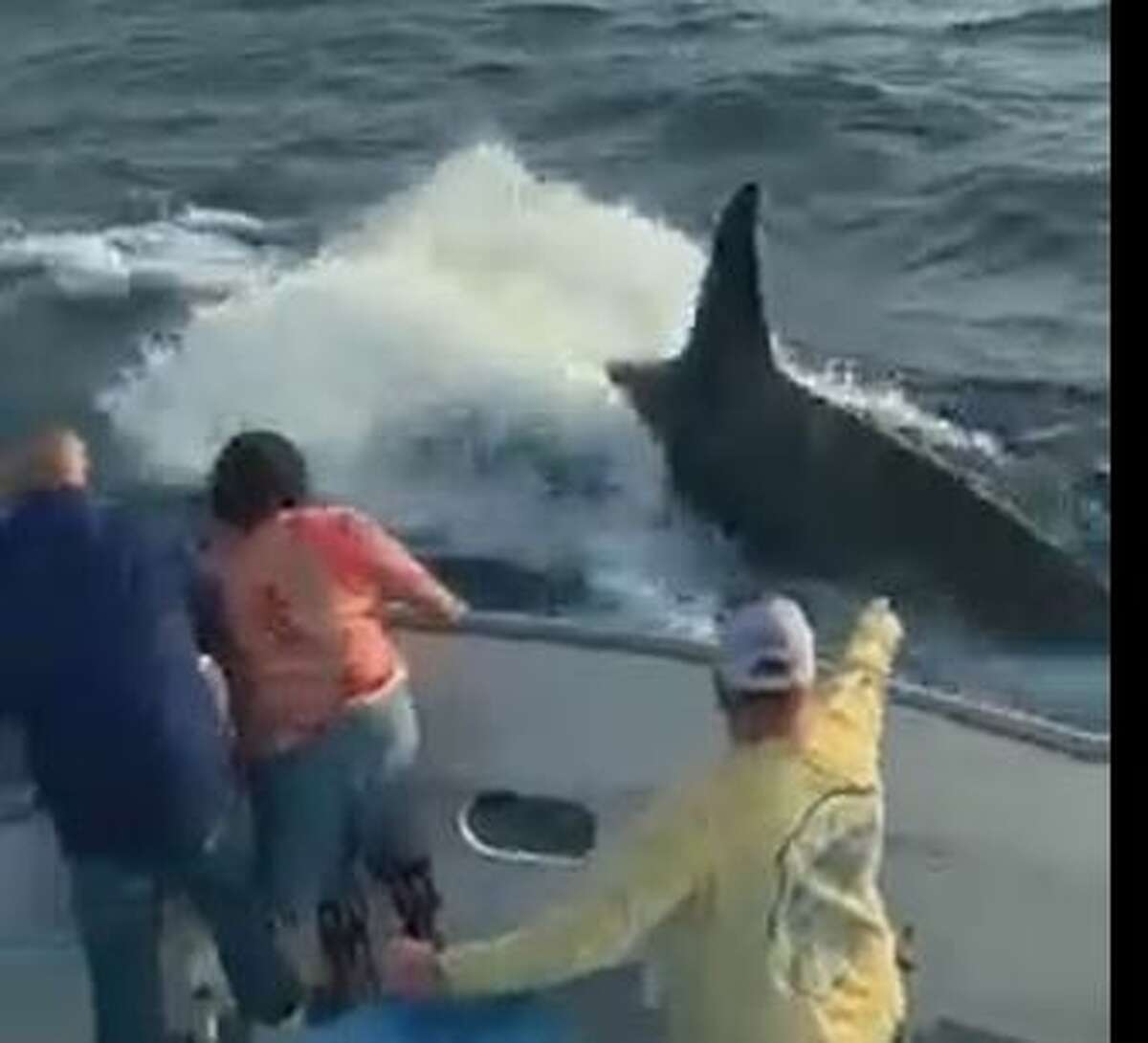Imagine: the vast expanse of the Gulf of Mexico, teeming with life. Now, picture a pod of colossal orcas, the apex predators of the sea, patrolling its depths. These enigmatic creatures, once considered rare visitors, are causing a stir in the scientific community as evidence suggests they may be establishing a more permanent presence in the Gulf.
Orcas: More Than Just Visitors?
While historically perceived as transient guests, orcas are increasingly being observed in the Gulf of Mexico, captivating scientists and the public alike. Online videos, firsthand accounts from fishermen, and a surge in reported sightings all point towards a potential shift in their presence.
A 2020 study suggested that as many as 200 orcas could be dispersed throughout the Gulf, a far cry from the notion of their rarity. Sightings have been reported from the coasts of Texas to the shores of Florida, indicating a widespread range that suggests the Gulf may play a more significant role in their lives than previously understood.
The warm waters of the Gulf could offer an ideal breeding ground for orcas, acting as a protective nursery for their young. This has led some scientists to propose that the Gulf orcas may represent a distinct population, uniquely adapted to warmer waters and potentially differing from their counterparts in colder environments.
Crowdsourcing Science: The Power of Citizen Observation
A significant portion of our current understanding of Gulf orcas stems from everyday people – fishermen, boaters, and ocean enthusiasts – who have captured invaluable photos and videos, contributing significantly to the scientific body of knowledge.
Scientists are actively engaged in unraveling the mysteries surrounding these Gulf residents. Research expeditions are underway to track their movements, analyze their diet, and understand their social structures.
Mysteries Yet to Be Solved
Despite these ongoing efforts, much remains unknown. Unlocking the secrets of Gulf orcas’ dietary preferences, social dynamics, migratory patterns, and the potential impacts of human activities is crucial for their long-term survival. Studying their adaptations to warmer waters could yield groundbreaking insights applicable to orca populations globally.
Are there orcas in the Florida Gulf?
While orcas are not year-round residents of the Gulf of Mexico, they are not strangers to its warm waters. These ocean giants have been spotted navigating these waters, particularly around the DeSoto Canyon, a deep underwater valley often described as their “vacation home.” The existence of a recognized group known as the “Northern Gulf of Mexico Stock” confirms that orcas do spend a significant amount of time in the Gulf.
Despite this presence, encountering an orca in the Gulf remains a rare and exciting event. Each sighting provides researchers with valuable data, offering glimpses into their movements and behaviors. The unusual stranding of an orca on a Florida beach in 2023 underscored how much we still don’t know about these animals and why they venture into the Gulf.
The DeSoto Canyon, with its abundance of marine life, appears to be a popular spot for orcas passing through. Their exact reasons for visiting the Gulf, the duration of their stay, and their subsequent destinations are all questions that scientists are eager to answer. Every orca sighting in the Gulf contributes a vital piece to the puzzle, enhancing our understanding and informing conservation efforts to protect these incredible creatures.
Can you see orcas in Mexico?
Yes, you can! While often associated with icy waters, orcas have a global presence, appearing in diverse marine environments, including the warm waters of the Gulf of Mexico.
The “Northern Gulf of Mexico Stock” is known to frequent the Gulf, particularly the DeSoto Canyon off the coast of Florida, an area rich in marine life. However, encountering these Gulf Coast orcas is a rare and special occurrence.
Each sighting is significant, providing researchers with valuable insights into how orcas utilize this unexpected habitat, their travel patterns, and their behaviors in warmer waters. Every glimpse into their lives in the Gulf adds to our understanding of these adaptable predators.
Do killer whales swim in Florida?
While killer whales, also known as orcas, are more commonly found in the colder regions of the ocean, they have been known to make appearances in Florida waters. These remarkable creatures, the largest members of the dolphin family, have been sighted in the Gulf of Mexico, even venturing close to the Florida coastline.
It’s important to note that these sightings are relatively rare. Orcas, as apex predators, sit atop the food chain. They are highly intelligent and social animals, traveling in pods that can reach up to 100 individuals.
Scientists are still unraveling the reasons behind their presence in Florida waters. Some speculate that these movements might be driven by shifts in prey distribution or changes in their natural habitats.
Spotting an orca off the coast of Florida would be an unforgettable experience, a testament to the biodiversity of our oceans. Our understanding of these incredible animals and their motivations for venturing into warmer waters is constantly evolving as researchers delve deeper into the mysteries of the ocean depths.
Are you keen on learning more about the rare orcas in the Gulf of Mexico? This article will immerse you in the wonder and mystery surrounding these majestic creatures.
And for all the fitness enthusiasts out there, we’ve got you covered! Our comprehensive Peloton shoe size chart will ensure you find the perfect fit for your next Peloton ride.
- Unveiling the Enigma: Mansoureh Khojasteh Bagherzadeh’s Public Appearances & Private Life in Iran - July 18, 2025
- Unveiling the Mystery: Mansoureh Khojasteh Bagherzadeh’s Husband: A Rare Glimpse into a Private Life - July 18, 2025
- Unveiling Masoud Khamenei’s Mother: Power, Influence, and Iran’s Future - July 18, 2025

















1 thought on “Orcas: Unveiling the Mystery of the Gulf of Mexico’s Resident Whales”
Comments are closed.